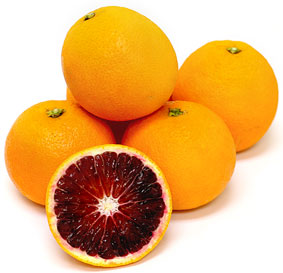


Moro Blood Oranges
Estimated Inventory, lb : 0
Description/Taste
The blood orange's rough, orange-colored skin is often blushed red, with flesh color varying between fruit. Easy to peel and medium-size, they are usually seedless. Blood oranges are sweet-sour, and tend to be slightly less acidic than standard oranges.
Seasons/Availability
Blood oranges are available in the winter and spring months.
Current Facts
The color of the Blood orange is due to a pigment called anthocyanin, not usually present in citrus but common in other red fruits and flowers. In spite of this fruit's refreshing, excellent flavor, Blood oranges have been slow to catch on commercially in the United States.
Applications
Moro blood oranges are most often used for their juice and flesh, in both sweet and savory preparations, raw or cooked. Use the juice in cocktails, syrups and marinades. Pair with other citrus, fresh herbs, soft cheeses, seafood, shallots and olives. Use as a compliment to yogurt, honey, olive oil and butter. Moro blood oranges will keep up to two weeks in the refrigerator.
Geography/History
Grown mostly in Mediterranean countries, this Blood orange is the most common commercial variety and today grows locally in San Diego, California. There are several varieties, including the elongated Tarocco, the round Moro, and the egg-shaped Sanguinelli. Each type differs in climate preference, size and flavor. Temperature, amount of light and the variety seem to affect coloration and intensity of Blood oranges. It is believed the first mutation of the Blood orange occurred in Sicily in the seventeenth century.
Recipe Ideas
Recipes that include Moro Blood Oranges. One




